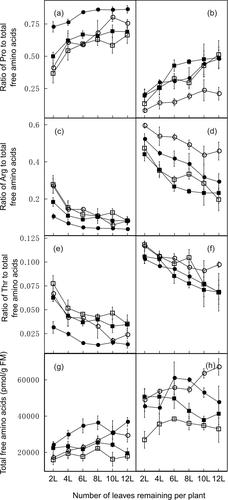Differential response of the accumulation of primary and secondary metabolites to leaf-to-fruit ratio and exogenous abscisic acid
Abstract
Background and Aims
Climate change is modifying grape berry composition and affecting wine quality and typicity. We evaluated the effects of leaf-to-fruit ratio and exogenous abscisic acid (ABA) application on the accumulation of primary and secondary metabolites in berries, in order to optimise climate change adaptation strategies.
Methods and Results
A range of leaf-to-fruit ratios (2, 4, 6, 8, 10 or 12 leaves per bunch) and exogenous ABA (400 mg/L) applied to Vitis vinifera L. cv. Cabernet Sauvignon fruiting-cuttings in a greenhouse prior to veraison were evaluated over six consecutive growing seasons (2013–2018). Reducing the leaf-to-fruit ratio decreased berry sugar and anthocyanin concentration, slightly increased total organic acids, and modified the composition of free amino acids. Exogenous ABA significantly enhanced sugar and anthocyanin concentration and partially restored the balance of sugar and anthocyanins under a low leaf-to-fruit ratio, without altering free amino acid concentration or sugar to acids ratios.
Conclusions
Combining manipulation of the leaf-to-fruit ratio with application of exogenous ABA offers a potential method to reduce berry sugar concentration, while maintaining anthocyanin concentration.
Significance of the Study
This study paves the way for possible adaptation strategies for viticulture to global climate change.


 求助内容:
求助内容: 应助结果提醒方式:
应助结果提醒方式:


